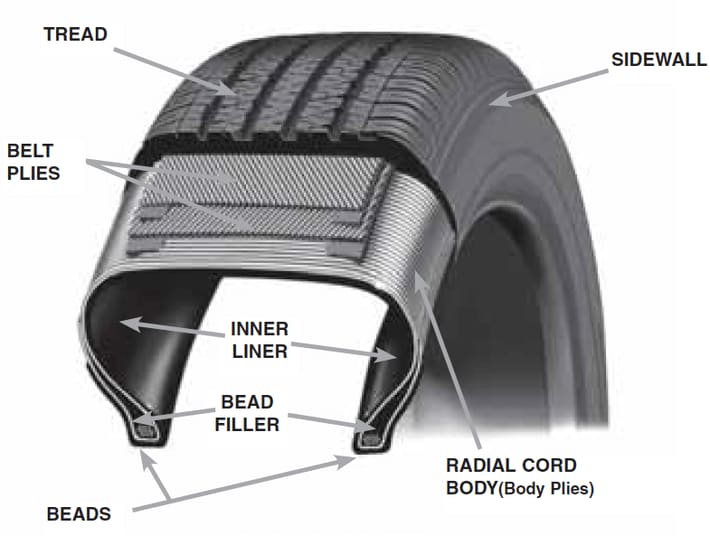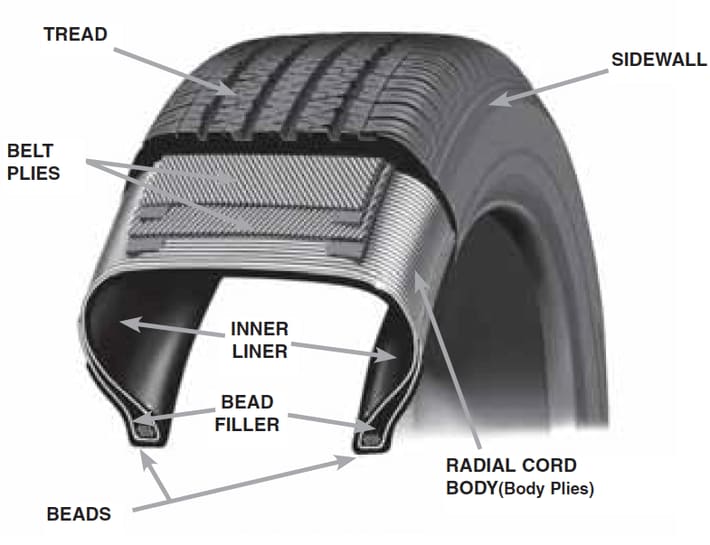As you drive down the road, have you ever wondered what’s inside your car tires? Are there inner tubes like those found in bicycle tires? The answer may surprise you. While inner tubes are still used in some specialty tires, the majority of modern car tires do not have inner tubes.
Instead, car tires use a system called tubeless technology. This means that the tire itself is designed to create an airtight seal with the wheel rim, eliminating the need for a separate inner tube. But how does this technology work, and what are the benefits of using tubeless tires? Let’s explore the fascinating world of car tires and learn more about this innovative technology.
No, modern car tires do not have an inner tube. Traditional tube-type tires were used in the past, but most modern tires are tubeless. Instead of an inner tube, the tire’s sidewall is reinforced to hold the air pressure. This design offers better safety, fuel efficiency, and easier maintenance.

Do Car Tires Have an Inner Tube?
Car tires are a vital component of any vehicle, and it is essential to know how they work. One question that often comes up is whether car tires have an inner tube. In this article, we will explore the answer to this question and provide you with a better understanding of how car tires work.
Understanding Car Tires
Car tires are designed to provide a smooth ride and ensure your safety on the road. They are made up of different parts, including the tread, sidewall, and bead. The tread is the part of the tire that comes into contact with the road, while the sidewall is the part that connects the tread to the bead. The bead is the part of the tire that sits on the rim.
There are two types of car tires: tubeless tires and tires with inner tubes. Tubeless tires do not have inner tubes and rely on the seal between the tire and the rim to hold air. Tires with inner tubes, on the other hand, have a separate tube inside the tire that holds the air.
Tires with Inner Tubes
Tires with inner tubes were the norm for many years before tubeless tires became popular. They were used in almost every vehicle, from bicycles to cars. The inner tube is a separate rubber tube that sits inside the tire and holds the air. It is sealed at the valve stem, which protrudes through the rim and allows air to be added or removed.
One benefit of tires with inner tubes is that they are less prone to leaks. If there is a puncture in the tire, the inner tube can be replaced, and the tire can continue to be used. However, they are also more prone to blowouts, and it can be challenging to repair a tire with an inner tube.
Tires without Inner Tubes
Tubeless tires have become increasingly popular in recent years. They are designed to hold air without the need for an inner tube. Instead, the tire’s bead forms an airtight seal with the rim, and the air is held in by the tire itself.
One significant advantage of tubeless tires is that they are less likely to experience a blowout. If there is a puncture in the tire, the seal between the tire and the rim will prevent the air from escaping quickly. This gives the driver more time to get the tire repaired or replaced.
The Benefits of Tubeless Tires
There are several benefits to using tubeless tires. First and foremost, they are more durable and resistant to punctures than tires with inner tubes. They are also easier to repair, as there is no need to remove the inner tube to patch a puncture. Additionally, tubeless tires offer better fuel efficiency, as they are lighter than tires with inner tubes.
Tires with Inner Tubes vs. Tubeless Tires
When it comes to choosing between tires with inner tubes and tubeless tires, there are several factors to consider. Tires with inner tubes are less expensive and are easier to repair. However, they are more prone to blowouts and leaks.
Tubeless tires, on the other hand, are more expensive but offer better durability and puncture resistance. They also provide better fuel efficiency and are more environmentally friendly.
Conclusion
In conclusion, car tires can either have an inner tube or be tubeless. Tires with inner tubes have a separate rubber tube that holds the air, while tubeless tires rely on the seal between the tire and the rim to hold the air. While both types of tires have their advantages and disadvantages, it is essential to choose the one that best suits your needs and driving conditions.
Key Takeaways: Do Car Tires Have an Inner Tube?
- Not all car tires have inner tubes. In fact, most modern car tires are tubeless.
- Tubeless tires have a special sealant that prevents air from escaping and provides a safer and more efficient driving experience.
- Inner tubes are still used in some older vehicles, as well as in certain off-road and agricultural vehicles.
- Tubes can be easily damaged by punctures or tears, which can cause a sudden loss of air pressure and lead to a dangerous situation.
- It’s important to properly maintain and inspect your car tires, regardless of whether they have inner tubes or not, to ensure optimal performance and safety on the road.
In summary, while inner tubes are still used in some vehicles, most modern car tires are tubeless and rely on sealants to keep air in. Proper tire maintenance and inspection is crucial for safe driving, regardless of whether your car tires have inner tubes or not.
What is a Tubeless Wheel
As a professional writer, it is clear that the topic of car tires and inner tubes is one that has piqued the interest of many individuals. The question of whether or not car tires have an inner tube is one that has been asked time and time again. While the answer may seem straightforward, the truth is that it can vary depending on the type of tire being used.
In general, modern cars do not use tires with inner tubes. Instead, they rely on tubeless tires that are fitted directly onto the wheel. However, there are still some older vehicles that use tires with inner tubes. Ultimately, the decision on which type of tire to use depends on the specific needs and preferences of the driver. Whether you prefer the convenience of tubeless tires or the reliability of inner tubes, it is important to choose the option that works best for you and your vehicle.

